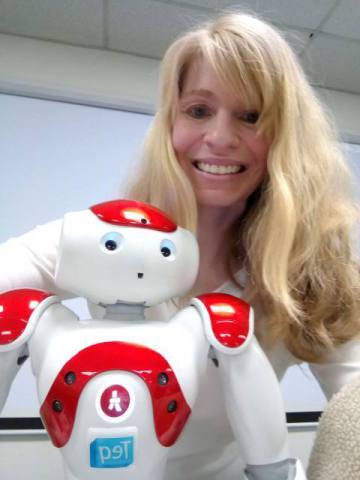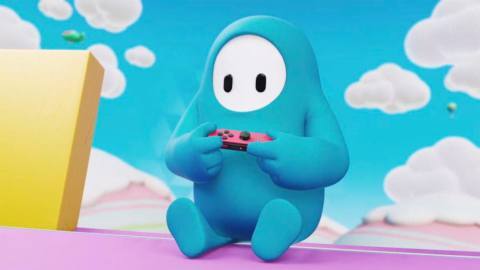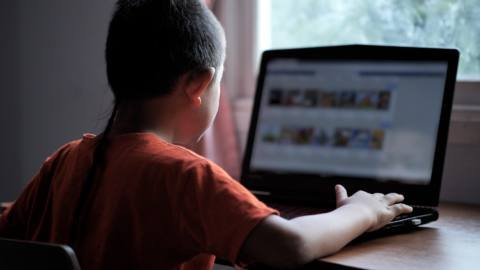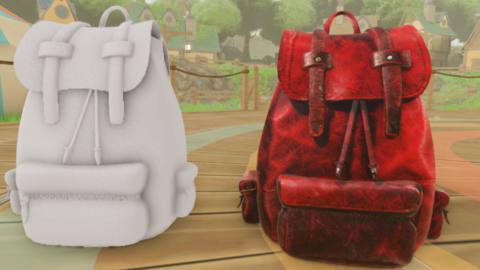More and more we hear about teachers turning to platforms like Roblox to engage their students outside of repetitive day-to-day video meetings. Earlier in the pandemic, the Roblox Education Team launched a Teaching Remotely resource to support educators with free curricula and lesson plans. This content is designed to help students start creating their own 3D experiences and teach them to stay safe and civil while playing and learning together.
While some educators are experimenting with their own lessons and play session ideas, we spoke with two professionals who are successfully using our education resources* with their students: Bianca Rivera, librarian at the Ruth C. Kinney Elementary school in Islip Terrace, N.Y., and Philip Williams, Head of Library Services at UWCSEA East Campus in Singapore. While Bianca works with younger 5-9 year old students, Philip’s work primarily focuses on students ages 11 to 18. Their work has been highlighted by the likes of Bloomberg and MIT Technology Review, so naturally we wanted to learn more. As we celebrate UN’s International Day of Education, this is a good opportunity to learn from these forward-thinking educators—here’s what they’ve shared…
How did you initially learn about Roblox?

Bianca: Although I am a school librarian now, I used to work as a children’s librarian at a public library from 2015 to 2019. The “after school” kids would come in around 3:30 pm every day and stay until about 6:00 pm, right before dinner time. They’d beg us for multiple computer passes so they could continue to play Roblox. We were only supposed to issue a single one-hour computer pass to kids, but they were so consumed with playing that I’d give in and renew their passes for another hour or so. At that time, I had no idea what Roblox was but quickly realized this interest was something we needed to capitalize on!

Philip: At my previous school, regular young visitors to the primary library introduced me to Roblox and assured me that it was very educational. They set about showing me how Roblox Studio worked and we never looked back.
What prompted you to start using Roblox?
Bianca: During my years at the public library, I had run different tech clubs. Once I realized that Roblox Studio existed, I quickly put together a Roblox Game Design club that met up off and on for about a year. None of us really knew what we were doing, but we really enjoyed tinkering, and I do think it was worthwhile. I will say it has been easier to get the public library to buy into running a Roblox Club than it has been at the public school, but I am working on getting more buy-in now. I think people are coming around, especially due to Roblox Studio and the Roblox Digital Civility curriculum.
Philip: In my previous school in Thailand, the students had been making Rube Goldberg machines in their classes. When we went into COVID lockdown, it was a natural connection for us to explore the Roblox physics engine by creating a chain reaction simulation. This also gave me the opportunity to explore some of the basic modeling options in Roblox and to implement some basic scripts to achieve some fun effects.
Many teachers right now are using Zoom or other video chatting software. What made you choose to use Roblox?
Bianca: When I was at the public library, I was only able to use Roblox since I didn’t have the resources to manage other multiplayer platforms and resources. Now that I work at a school, we use other gaming platforms. I personally find that my students prefer to tinker with creating experiences in Roblox Studio, so I would like to spend more time on that endeavor in the future.
Philip: Video games are a hugely motivating activity, which quite naturally provides many opportunities for learning. Roblox Studio is a free, safe, and open platform, which is an ideal stage for learning to happen very organically.
Could you walk us through exactly how you teach the students whenever you’ve used Roblox in your work?
Bianca: I display Roblox Studio on the smartboard and go through one of the Roblox-made, template-based tutorials, such as Island of Move. I try to follow the standard I Do, We Do, You Do teaching strategy. First, I show them what to do and how to do it (they only watch me and take notes). Next, we try it together, and eventually they are released to try the tutorial on their own. I try to never use paper handouts (even before COVID, I ran paperless classrooms!) and just have them follow along with whatever online tutorial I am using.
Philip: I do very little direct teaching of students in particular aspects of Roblox Studio. They all sign on at the same time and get to work with very little guidance from me. What I aim to do is create a lively community of practice where experienced students work alongside new game designers to give tips and suggestions as they explore the platform together. I join in when support is required to maintain constructive interactions, to ask questions to stretch their thinking, and to encourage them to continue to extend their skills in new ways and to enjoy the act of creation alongside them.
What has the student reaction been?
Bianca: They are always—I like to say—”tickled” when they learn I have an account and can play the games. And I would say they are rather impressed when I show them how to use Roblox Studio as the majority never have tried.
Philip: Overwhelming excitement and enthusiasm. I would have gone in a different direction if they weren’t interested in video game development. I was really just following their interests and finding ways to connect these into learning opportunities.
Do all students have equal access to technology?
Bianca: Yes, now, ironically due to the COVID shutdown, our students finally are 1-1 and have equal access to Chromebooks. This has been a fantastic benefit, but it’s difficult since Roblox Studio is not available on Chromebooks. I imagine most school districts have issued Chromebooks to students. Due to this limitation, I am only able to offer Roblox Studio to technology club students as we meet in our PC computer lab.
Philip: Not entirely, no. At school, we found ways to give the maximum number of students the opportunity to explore the possibilities of Roblox Studio. Access to the necessary technology at home, however, was highly variable. Their school experience was really a taster for what is possible. Not all students had the time or opportunity to go deeper.
Do you plan to continue to use the platform after the pandemic?
Bianca: Yes, absolutely we will continue to use it. I hope the longer I am at my school, the more I can convince colleagues and admins of the benefit that using Roblox Studio would bring, especially with the emphasis on the CS for All Movement.
Philip: I am now at a new school in Singapore having just moved from Bangkok. I am reaching out to the students to see how much experience they have with video games and if they have any interest or experience in video game development. It is early in my time here, but I already have the sense that there are many gamers and a few game developers, which is not surprising. I expect that Roblox will be a great platform to work with. We might use other platforms too. I’m most interested in supporting my students’ interests and learning about more overarching video game development principles and concepts.
Any additional advice for fellow educators or feedback for Roblox?
Bianca: I am working on converting Roblox’s wonderful Digital Civility curriculum into Nearpod lessons that I can use with my students. Nearpod and Pear Deck have become huge since the shutdown, and I think it’s because teachers needed a surefire way to engage students with slideshows that were truly interactive. When the kids were at home, it wasn’t enough to screenshare a slideshow and have the students quietly watch. Tools like Nearpod allow students to interact (and even have fun!) with the slideshow lessons. We are back to school full time now, but I continue to use Nearpod as my go-to tool now. The Roblox Digital Civility curriculum will work great in it—I can’t wait to show it to the kids!
Philip: It is an obvious thing to say, but video gaming is a huge part of our lives and the lives of our students. Schools often reflexively ignore, suppress, or condemn video gaming culture. At best, some try to “gamify” education. However, this ignores the huge potential to connect video gaming culture to learning in many different disciplines. If we pay attention to what our students are interested in and listen to how they describe their gaming lives, they can demonstrate very sophisticated language and critical thinking. Linking this interest with the possibility of students being creators in this sphere, rather than simply consumers, dramatically expands the many learning opportunities that are right in front of us. The opportunities are right there for us as educators to support students who are way ahead of us—we just need to pay attention and provide support.
*Free education resources and lesson plans developed by Roblox are available on the Roblox Education Hub: https://education.roblox.com/en-us/
The post Using Roblox in the Classroom: Teachers Share Advice appeared first on Roblox Blog.






